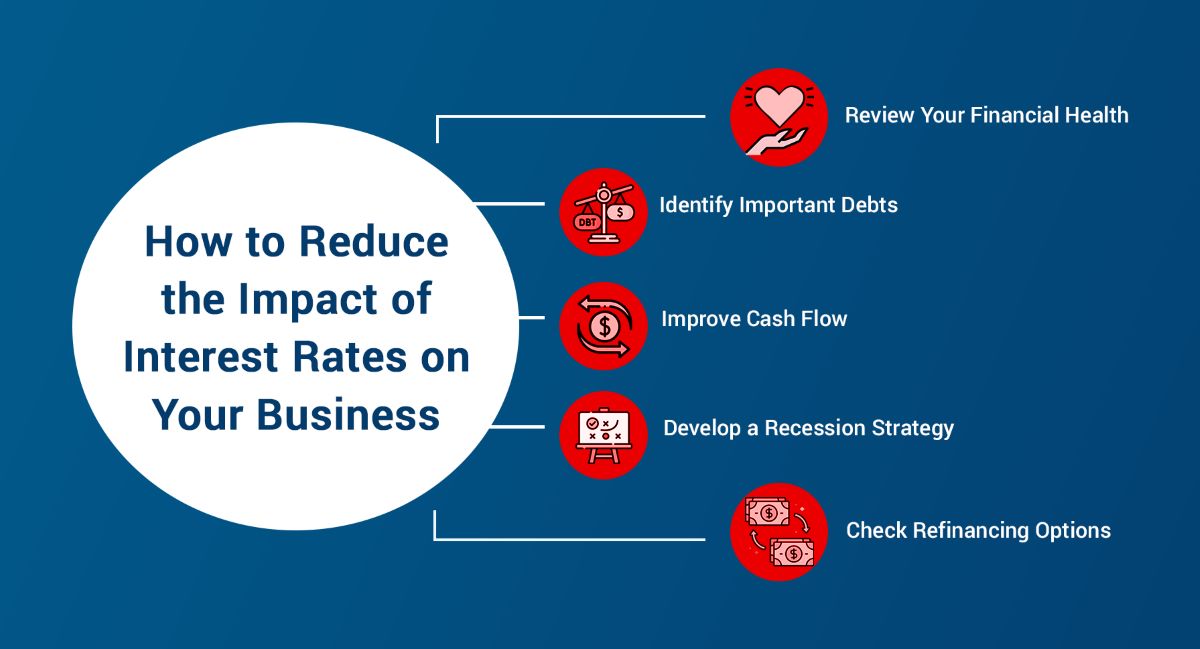

Finance
When To Use Magnetic Strip Or EMV Chip
Published: March 6, 2024
Learn when to use magnetic strip or EMV chip for secure financial transactions. Understand the benefits and risks to make informed decisions in finance.
(Many of the links in this article redirect to a specific reviewed product. Your purchase of these products through affiliate links helps to generate commission for LiveWell, at no extra cost. Learn more)
Table of Contents
Introduction
In the realm of financial transactions, the choice between using a magnetic strip or an EMV chip plays a pivotal role in ensuring the security and efficiency of electronic payments. The magnetic strip, a long-standing technology, has been the traditional method for storing cardholder data, while the EMV (Europay, Mastercard, and Visa) chip, a more advanced and secure technology, has gained widespread adoption in recent years. Understanding the nuances of these two technologies is crucial for individuals and businesses alike, as it directly impacts the safety of financial transactions and the protection of sensitive cardholder information.
As we delve into the intricacies of magnetic strip and EMV chip technologies, it becomes evident that each has its own set of advantages and disadvantages. While the magnetic strip is widely recognized and accepted, its susceptibility to fraud and unauthorized access has paved the way for the emergence of the EMV chip, which offers enhanced security features. By comprehending the strengths and limitations of both technologies, users can make informed decisions regarding the appropriate usage of magnetic strips and EMV chips.
This comprehensive exploration aims to shed light on the inner workings of magnetic strip and EMV chip technologies, elucidating their respective advantages, disadvantages, and optimal usage scenarios. By the end of this journey, readers will be equipped with the knowledge required to discern when to utilize the magnetic strip and when to opt for the EMV chip, thereby fortifying their understanding of secure and efficient electronic payment methods.
Understanding Magnetic Strip Technology
The magnetic strip, also known as a magstripe, has long been a ubiquitous feature on the back of credit, debit, and identification cards. Comprising a thin layer of magnetic material, typically iron oxide, the strip is divided into three tracks, each capable of storing data through magnetization. Track 1 contains the cardholder’s name, account number, and other pertinent information, while Track 2 holds the primary account number and expiration date. Track 3, less commonly used, may store additional data as per card issuer specifications.
When a card is swiped through a magnetic card reader, the data encoded on the magstripe is read and transmitted to the payment processing system. This method of data transfer, while prevalent, is susceptible to security breaches and fraud due to its static nature. The information stored on the magnetic strip remains constant, making it vulnerable to unauthorized duplication and exploitation by fraudsters.
Despite its inherent security risks, the magnetic strip technology boasts widespread acceptance and compatibility across a myriad of payment terminals and systems. Its simplicity and cost-effectiveness have contributed to its enduring presence in the realm of electronic transactions. However, the increasing prevalence of fraudulent activities has prompted the financial industry to seek more secure alternatives, leading to the development and implementation of EMV chip technology.
It is important to note that the magnetic strip technology, while prevalent, is gradually being phased out in favor of more secure alternatives such as EMV chip cards. This transition is driven by the imperative to mitigate the risks associated with magnetic strip transactions, thereby enhancing the overall security of electronic payments.
Understanding EMV Chip Technology
The EMV chip, named after its developers Europay, Mastercard, and Visa, represents a significant advancement in payment card technology. Unlike the static data storage mechanism of magnetic strips, EMV chips employ dynamic authentication methods to enhance transaction security. The chip, typically embedded in the card, generates a unique cryptogram for each transaction, rendering it exceedingly difficult for fraudsters to replicate or intercept sensitive cardholder data.
EMV chip cards utilize a process known as dynamic data authentication, which involves the generation of a unique code for each transaction. This dynamic code, or cryptogram, is validated by the payment terminal and is rendered ineffective for subsequent transactions, thwarting unauthorized replication or fraudulent use of the card data. Furthermore, EMV technology supports additional security features such as cardholder verification methods (CVM) like PIN entry or signature authentication, adding layers of protection to the transaction process.
One of the hallmark features of EMV chip technology is its resilience against counterfeit card fraud, a prevalent threat in the realm of magnetic strip transactions. The dynamic nature of the data generated by the EMV chip significantly reduces the susceptibility to unauthorized replication and exploitation, bolstering the overall security of electronic payments.
Moreover, the widespread adoption of EMV chip technology has spurred the deployment of EMV-compliant payment terminals, which are equipped to process chip card transactions. This transition marks a concerted effort by the financial industry to fortify the security of electronic payments and mitigate the risks associated with traditional magnetic strip technology.
As the financial landscape continues to evolve, the migration towards EMV chip technology represents a pivotal step in safeguarding electronic transactions and protecting the integrity of cardholder data. The dynamic authentication mechanisms and robust security features inherent to EMV chip technology underscore its role as a formidable safeguard against fraudulent activities, positioning it as a crucial advancement in the realm of electronic payments.
Advantages and Disadvantages of Magnetic Strip and EMV Chip
Both magnetic strip and EMV chip technologies have distinct sets of advantages and disadvantages, influencing their suitability for various payment scenarios.
Advantages of Magnetic Strip:
- Widespread Acceptance: Magnetic strip technology is universally recognized and compatible with a vast array of payment terminals and systems, ensuring broad acceptance across diverse retail environments.
- Cost-Effective: The implementation and maintenance of magnetic strip technology are relatively economical, making it an accessible option for businesses and financial institutions.
- Legacy Compatibility: Many existing payment systems and infrastructure are designed to accommodate magnetic strip transactions, providing seamless integration for businesses and consumers.
Disadvantages of Magnetic Strip:
- Vulnerability to Fraud: The static nature of data stored on magnetic strips renders them susceptible to unauthorized duplication and exploitation, leading to an increased risk of fraudulent activities.
- Security Concerns: The lack of dynamic authentication mechanisms in magnetic strip technology heightens the likelihood of data breaches and compromises, posing a significant security risk for electronic transactions.
Advantages of EMV Chip:
- Dynamic Authentication: EMV chip technology employs dynamic data authentication, generating unique codes for each transaction to mitigate the risks of unauthorized replication and fraudulent use of cardholder data.
- Counterfeit Fraud Prevention: The robust security features of EMV chips significantly reduce the susceptibility to counterfeit card fraud, bolstering the overall integrity of electronic payments.
- Enhanced Security: The incorporation of cardholder verification methods (CVM) such as PIN entry or signature authentication adds layers of security, enhancing the protection of sensitive cardholder information.
Disadvantages of EMV Chip:
- Transition Challenges: The widespread adoption of EMV chip technology necessitates the deployment of EMV-compliant payment terminals, posing logistical and cost challenges for businesses and financial institutions.
- Initial Implementation Costs: The initial investment required for the integration of EMV chip technology may present financial barriers for smaller businesses and organizations.
By weighing the advantages and disadvantages of magnetic strip and EMV chip technologies, stakeholders can make informed decisions regarding the adoption and utilization of these payment methods, considering factors such as security, compatibility, and the evolving landscape of electronic transactions.
When to Use Magnetic Strip
While the prevalence of EMV chip technology continues to expand, there are certain scenarios where the utilization of magnetic strip technology remains relevant and practical.
Legacy Systems and Infrastructure:
In instances where businesses operate with legacy payment systems and infrastructure designed primarily for magnetic strip transactions, the continued use of magnetic strip technology may be warranted. The cost and logistical challenges associated with transitioning to EMV-compliant systems may render magnetic strip transactions a viable and pragmatic option for such establishments.
International Travel:
When traveling to regions where EMV chip technology is not widely adopted, individuals may encounter limitations in utilizing EMV chip cards. In such cases, carrying a magnetic strip card serves as a practical fallback, ensuring seamless access to financial transactions in areas where EMV-compatible terminals may be scarce.
Compatibility Concerns:
Some payment terminals, particularly in certain niche industries or geographies, may not support EMV chip transactions due to technological constraints or limited infrastructure upgrades. In such scenarios, the continued use of magnetic strip technology enables businesses to maintain compatibility with existing payment systems and cater to diverse customer preferences.
It is important to note that while magnetic strip technology offers practical solutions in specific contexts, the overarching trend in the financial industry favors the transition towards EMV chip technology to enhance the security and integrity of electronic payments.
When to Use EMV Chip
As the financial landscape evolves and security concerns take center stage, the utilization of EMV chip technology proves advantageous in various scenarios, offering enhanced security and mitigating the risks associated with traditional magnetic strip transactions.
High-Security Transactions:
In environments where the protection of sensitive cardholder data is paramount, such as high-value transactions or interactions involving confidential information, the use of EMV chip technology is highly recommended. The dynamic authentication mechanisms and robust security features inherent to EMV chips bolster the integrity of electronic payments, reducing the susceptibility to fraudulent activities.
Global Travel and Transactions:
For individuals engaging in international travel or conducting transactions across diverse geographic regions, EMV chip cards offer a secure and versatile payment solution. The widespread adoption of EMV technology on a global scale ensures seamless access to secure transactions, mitigating the risks associated with counterfeit card fraud and unauthorized data replication.
Future-Proofing Payment Systems:
As the financial industry gravitates towards the widespread adoption of EMV chip technology, businesses and organizations stand to benefit from future-proofing their payment systems. The integration of EMV-compliant terminals and the acceptance of chip card transactions not only enhance security but also align with the prevailing trends in electronic payment methods, ensuring compatibility and readiness for evolving industry standards.
By leveraging the dynamic authentication mechanisms and robust security features of EMV chip technology, businesses and individuals can fortify the integrity of electronic transactions, mitigate the risks of fraudulent activities, and embrace a secure and future-ready payment ecosystem.
Conclusion
The dynamic landscape of electronic payments is underscored by the pivotal choice between magnetic strip and EMV chip technologies, each offering distinct advantages and considerations. While magnetic strip technology continues to maintain relevance in certain contexts, the widespread adoption of EMV chip technology marks a significant leap towards fortifying the security and integrity of electronic transactions.
Understanding the nuances of these technologies is essential for individuals, businesses, and financial institutions, as it directly impacts the safety of financial transactions and the protection of sensitive cardholder information. The magnetic strip, with its widespread acceptance and legacy compatibility, remains a pragmatic option in scenarios where transitioning to EMV chip technology presents challenges or limitations.
Conversely, the EMV chip technology, renowned for its dynamic authentication mechanisms and robust security features, emerges as the vanguard of secure electronic payments. From high-security transactions to global travel and future-proofing payment systems, the utilization of EMV chip technology offers unparalleled security and versatility, mitigating the risks associated with traditional magnetic strip transactions.
As the financial industry continues to prioritize security and resilience in electronic payments, the migration towards EMV chip technology represents a pivotal stride in safeguarding transactions and protecting the integrity of cardholder data. While the coexistence of magnetic strip and EMV chip technologies persists, the prevailing trajectory favors the widespread adoption of EMV chip technology, heralding a new era of secure and future-ready electronic payments.
By embracing the advancements and security features inherent to EMV chip technology, stakeholders can navigate the evolving landscape of electronic payments with confidence, ensuring the protection of sensitive cardholder data and fortifying the integrity of financial transactions in an increasingly interconnected world.














